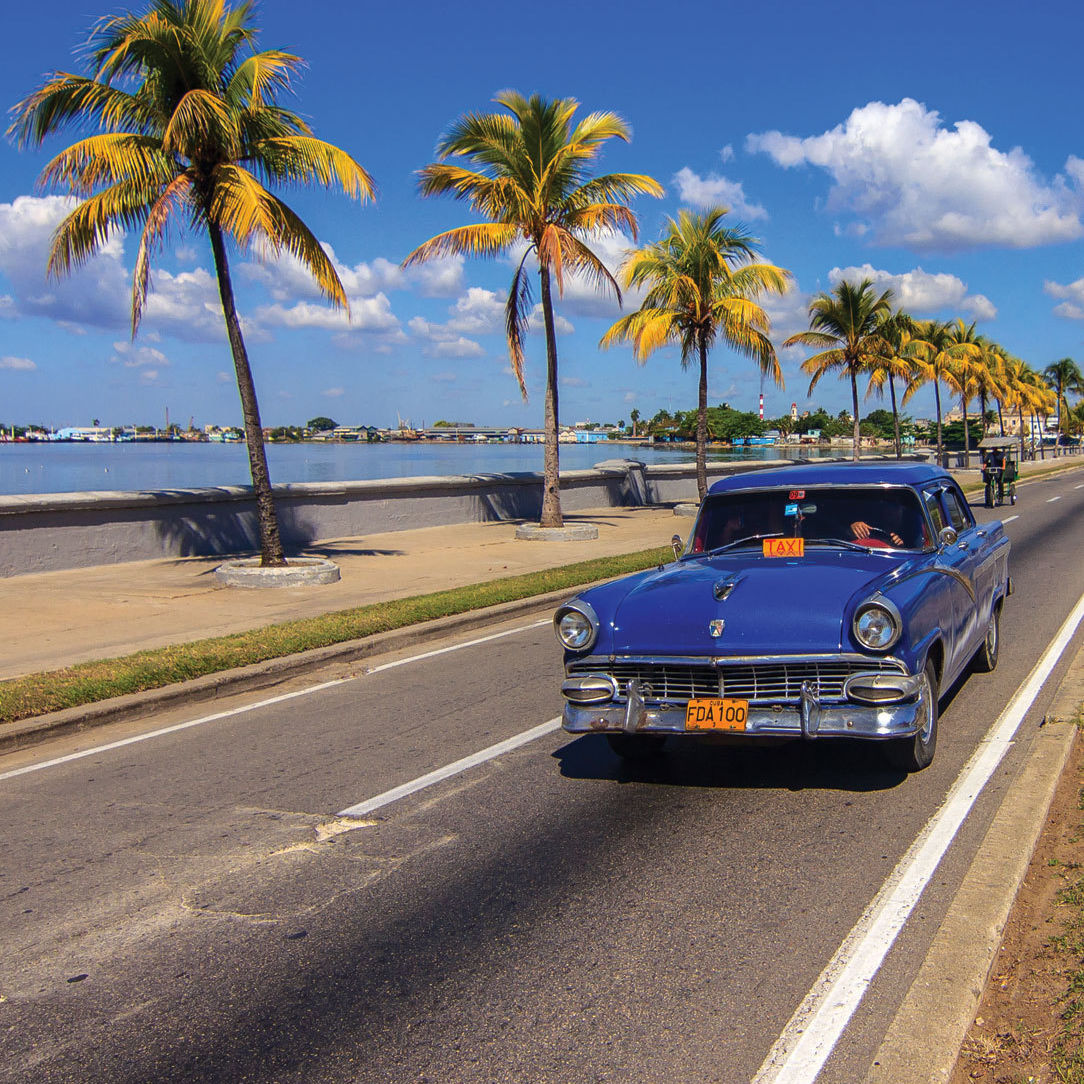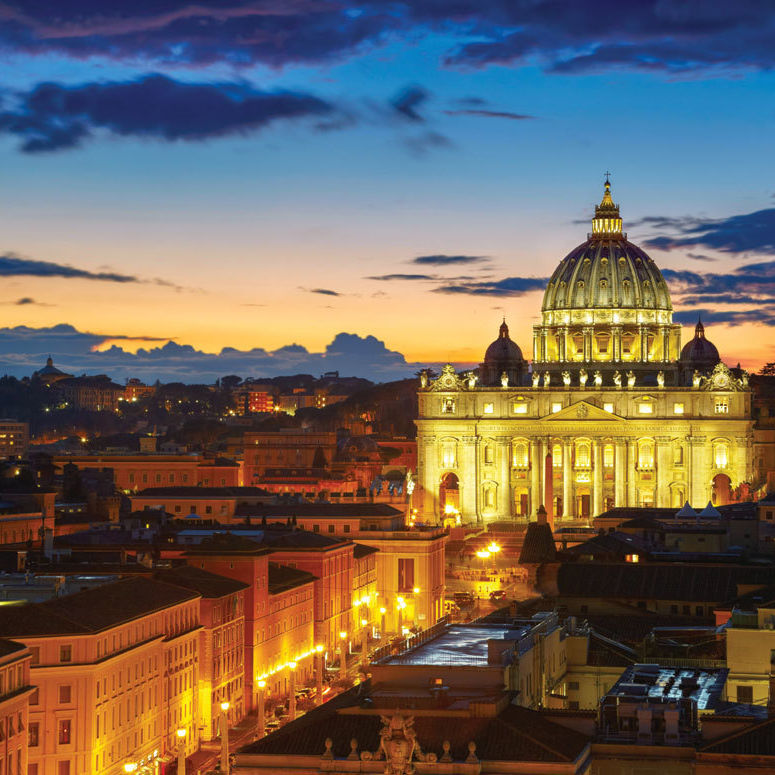Great Escapes: Charleston
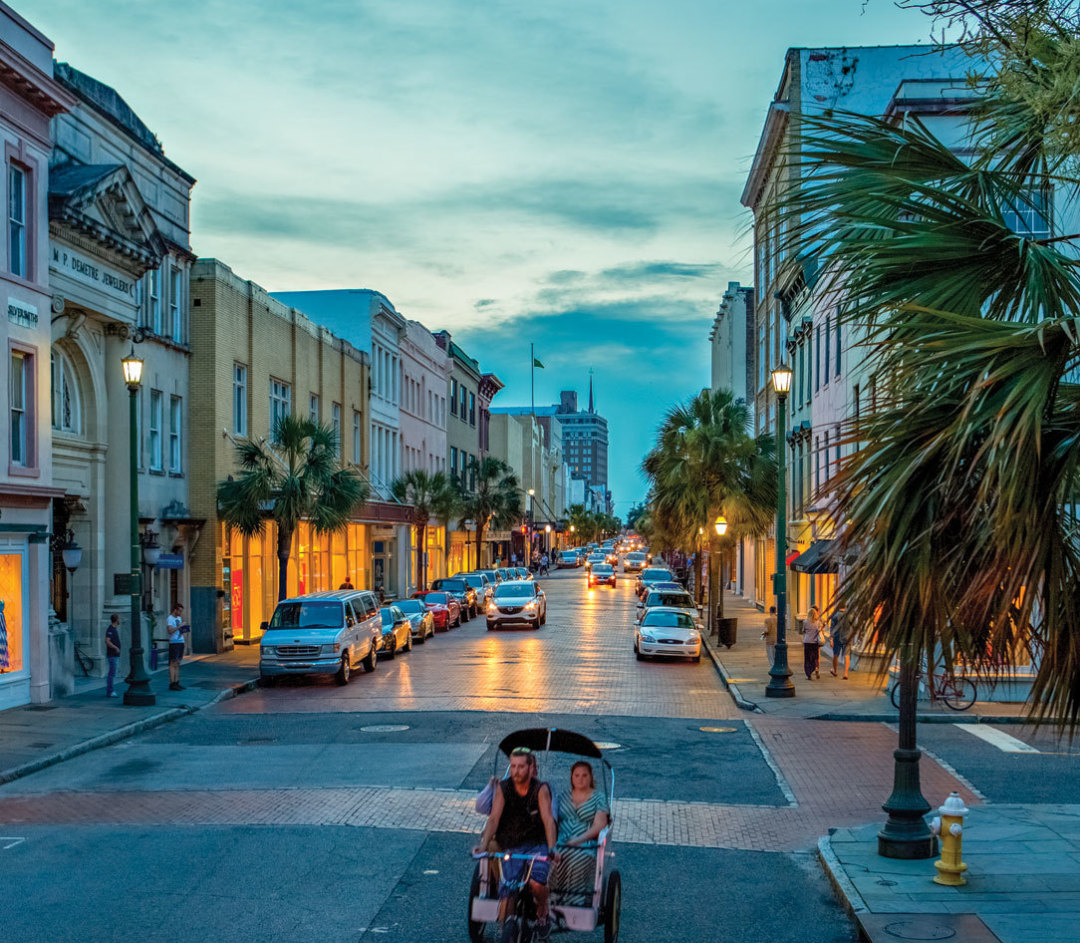
On downtown's King Street
Image: Stacy Howell
A decade ago, I found myself on the Costa Blanca in sunny southeastern Spain, visiting British friends who’d settled into an expat community in Alicante. Having been to Mexico plenty of times and grown up in a mixed Mexican-American family, I expected to get along just fine on the Spanish Mediterranean. But none of the Spaniards I met could understand my mongrel Tex-Mex Spanish, nor I what I judged to be their lisped variety. And instead of basking in a heavy dose of local culture, I was instead whisked from one gastropub to another, each populated by more English expats (and Dutch and German) than Spaniards. When I finally asked my lovely British host on day three if we might eat some real Spanish cuisine, she laughed merrily and tutted: “We don’t eat that stuff, dear. But I’ll pick you up a tortilla at Aldi.” The next day, she returned with a refrigerated, supermarket version of tortilla española that I alone ate, wondering if it was supposed to taste quite so congealed.
I found myself at odds with Charleston, South Carolina in much the same way I did with Spain-by-way-of-the-British. For a Houstonian, a trip to Charleston can be a bit like visiting an alien world that one never expected to be so different—nor so at odds with its native culture.
Where Houston is tall and sprawling, Charleston is low-slung, although its thin, sharp, venerable church spires do stretch eagerly into the heavens. And there are lots of other things you never see in Houston, like winding, narrow, centuries-old streets, as well as things you really never see, like carriages hauling endless pairs of couples on romantic weekend getaways. Where Houston is a city of industry, Charleston is devoted to pleasure. And if you think your fellow Houstonians are friendly, prepare to have your brain melted by Charleston’s intense, nigh-obsequious Southern cordiality. (You’ll struggle to find new inflections for the dozens of thank yous you’ll churn out to keep up, and never again wonder why Condé Nast Traveler placed the city atop its annual list of the friendliest American cities.) And there’s one other striking difference between us and them: those friendly faces in the Holy City—as it’s known—are far less diverse than the Bayou City’s.
Maybe this shouldn’t matter, at least not to a traveler. After all, you’re only coming to visit. You’re here to indulge in the rich culinary tradition of South Carolina’s coastal Lowcountry, or trip through bachelorette parties with your sorority sisters, or drink one too many rum cocktails on the entrancing rooftop patios that line King Street. You’re here to play golf and tennis, to do yoga-lates on the beach (that’s yoga and pilates together; Gwyneth Paltrow would be proud of you) and then leave. You go other places to find what you can’t find back home, because otherwise why travel at all, right? Still, there are moments when you can’t help wondering:
“Am I the only brown person here?”
It was my friend Hala. We’d been visiting Blue Bicycle Books, which is one of the better bookstores I’ve seen in years, a rainbow-hued warren of interesting volumes both old and new with friendly employees eager to make recommendations. Its spell was broken, however, as soon as we left, as soon as we were back on the sidewalks filled with white tourists. “I think I’m the only brown person here!”
Charleston, you will note, is not unaware of the whitewashing of its tourism industry. In 2012, the Charleston City Paper, in an article titled “Charleston: The No. 1 City in the World for White People,” condemned the local convention and visitors bureau for courting white visitors to the exclusion of all others. As writer Chris Haire put it, “their marketing slogan might as well be, ‘Charleston. Where white people play and black people make sweetgrass baskets.’”
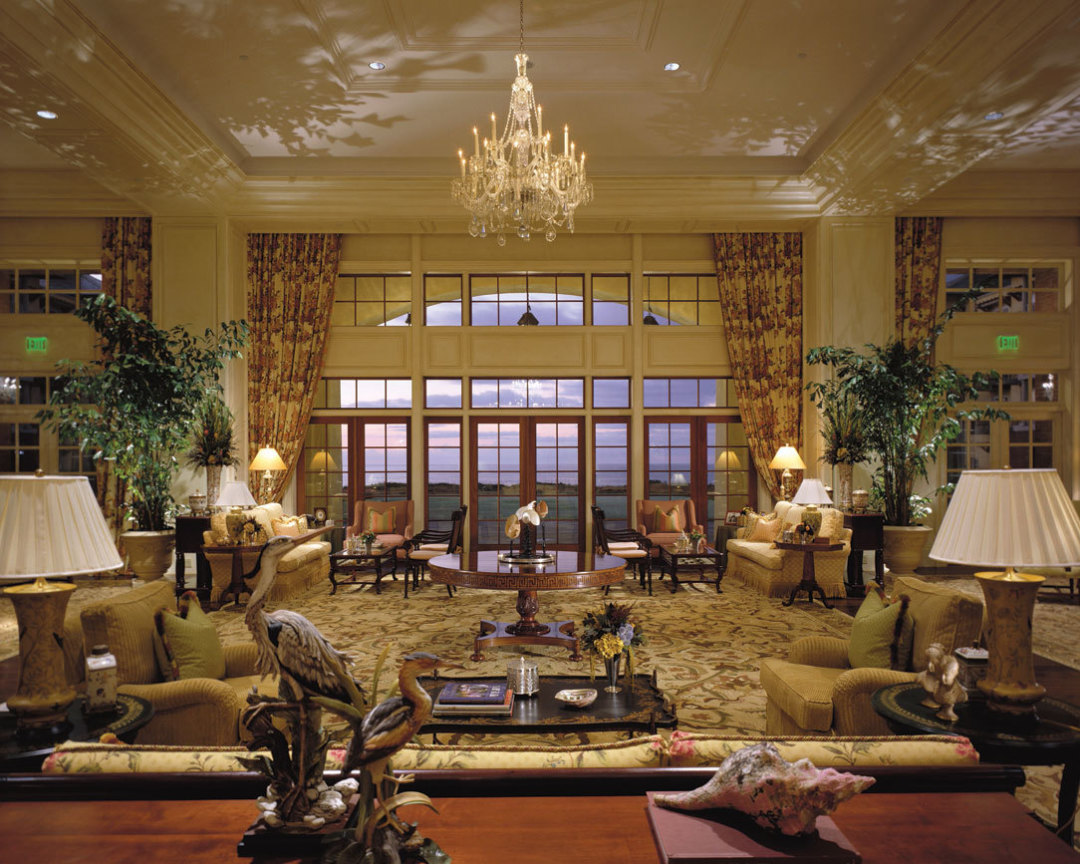
Grand: the Kiawah Island Golf Resort
Image: Kiawah Island Golf Resort
Perhaps this impression is inevitable in a city whose history museum still refers to the Civil War as The War Between the States, and yet Charleston’s food points in a different direction, toward a deeper, richer commingling than anything you’ll see on its streets, at least these days.
“Charleston is a port town, and 200 years ago, it looked like Houston,” said Hanna Raskin, dining editor at the Charleston Post-Courier—which, in keeping with the city’s 400-some-odd years of history, is the oldest newspaper in the South. “In addition to significant communities of Sephardic Jews and Huguenots, the city was home to immigrants from Asia and free blacks.” Today, 64 percent of Charleston is white, while 30 percent is black; the other 6 percent is made up of Hispanic and Asian residents, according to the latest US Census Bureau statistics.
As befitting its port city roots, Raskin pointed out, “iconic Lowcountry dishes such as country captain and kedgeree [are] nods to cultural exchanges with ‘folks from off,’ as the locals call non-natives.”
Country captain, if you’re wondering, is a curried chicken and rice dish, and one of the specialties at Hominy Grill in the trendy Elliotborough neighborhood, but only one. The menu includes a host of Gullah (a word that refers to the descendants of African slaves who populate the Lowcountry region here along the Atlantic coast) and Lowcountry dishes rarely found in Houston: she-crab soup, sea-sweet and studded with bright orange roe the exact color of Charleston’s sunsets; tomato pudding, whose soft mounds have the cheeky jiggle and sugary pucker of a dessert; and much more.
“It's a point of pride for Charleston that Lowcountry culinary traditions survive here,” said Raskin, with whom I shared a Hominy Grill meal one sleepy afternoon. “The city is highly preservation-minded”—yet another alien concept to Houstonians—“but I think this is one realm in which the protective stance makes sense.” Among the outcomes of Charleston’s modern-day provincialism is the tendency of Lowcountry cooking to turn in on itself, with the result that the city’s young chefs are producing fascinating reinventions of old dishes. Chuckled Raskin: “While it's true that Charleston doesn't have corner pho shops and taquerias, I don't think it's immune to outside influences. In good Charleston fashion, we are constantly entertaining visitors, so our chefs hardly operate in a vacuum.”
Nowhere is the cross-pollination more obvious than at The Obstinate Daughter. On sleepy Sullivan’s Island, just off the Charleston coast, this eatery serves up finely tossed pizzas topped with local clams, roasted fennel, lemon and chile flakes, while Geechie Boy grits, a regional favorite, are fried into long batons and stacked Lincoln Log-style beside buttery shrimp rolls.
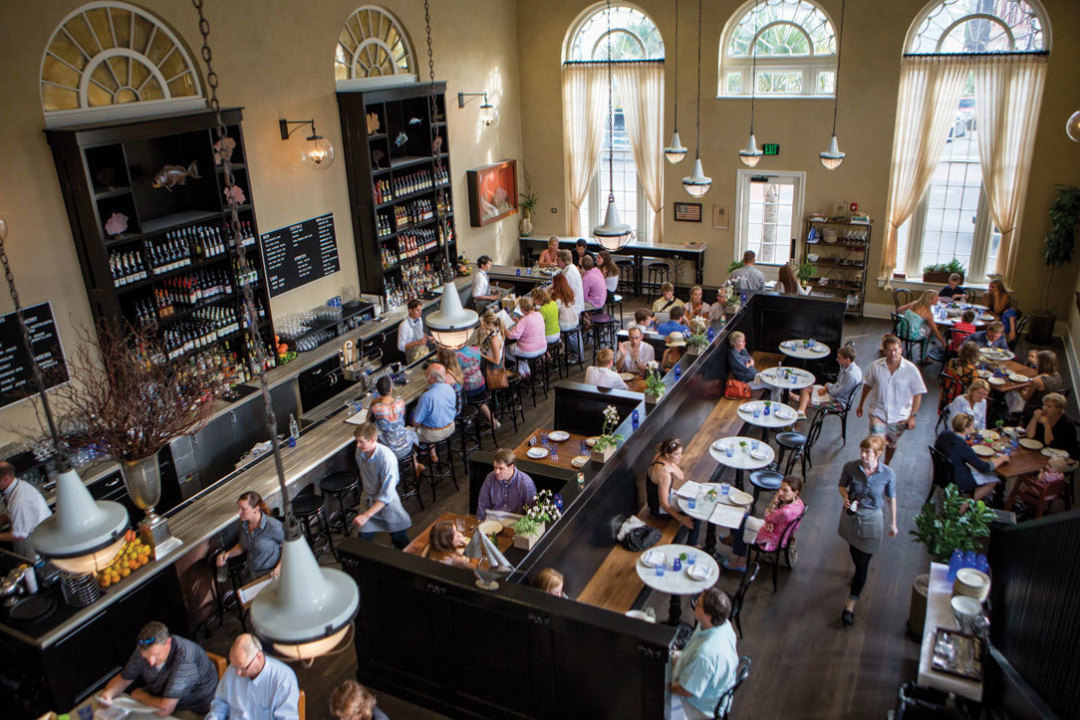
The Ordinary, a bank turned "Southern seafood hall"
Image: Stacy Howell
But you’ll see gastronomic integration in lots of places, including the airy, Corinthian-columned dining room of The Ordinary, a turn-of-the-20th-century bank turned “Southern seafood hall” that offers elongated Capers Blades oysters plucked from nearby waters, smoked amberjack pâté, and gracious, over-the-top service that only a Condé Nast Traveler writer could love. And then of course there’s Husk, where noted chef Sean Brock has almost single-handedly revived Southern cooking in the past few years by devoting himself to local ingredients and vintage Southern recipes.
As soon as you leave Charleston’s tables, however, the watchword becomes not integration but segregation, as in “De facto segregation remains norm in many Charleston County schools,” a February headline in the Post-Courier.
Which brings me to the Charleston Museum’s Civil War exhibit, as large as one would expect in the city where the first shots of the bloody conflict were fired, in the state that was the first to secede from the Union. It is sandwiched between an extensive, unapologetic exhibit on slavery, and one featuring a real Egyptian mummy and a two-headed baby snake in a glass jar—the latter curiosities dating back to the museum’s founding, in 1773.
Hala walked briskly through the Civil War exhibit, preferring to admire the Ripley’s Believe It or Not–style displays beyond. But I found myself absorbed by the Charleston Museum’s perspective on the conflict, which emphasizes crushed liberties, deprivation and chaotic destruction. The extensive exhibit detailed the dual attack on Charleston by sea from submarines and by land from Union batteries whose bombardments more or less destroyed the city. General Sherman’s encroaching army, meanwhile, prompted General P.G.T. Beauregard—whose troops had fired that first shot at Fort Sumter—to finally order the city evacuated in 1865.
For $19, you can take a tour of Fort Sumter, which includes a slow cruise across the wide mouth of Charleston’s famously fortified harbor to reach the tiny speck of land memorialized forever as the place where the Civil War began in April 1861. Inside the fort’s thick, black walls, you encounter another Civil War museum—smaller, run by the National Park Service, and offering a more, well, balanced account of the conflict.
A massive, tattered American flag is displayed in the center, the same one that General Beauregard allowed Union commander Robert Anderson to salute one final time before removing it—and Anderson’s troops—from Fort Sumter after the rocky spit was taken by the Confederacy in 1861. The scene between the two men, as depicted by the museum, has a gentility to it that would make it unusual in the annals of warfare, and worthy of reflection. My own reverie was interrupted, however, by a man wearing a baseball cap emblazoned with a Confederate flag.
“Sherman was a butcher!” he shouted loudly to his two young sons and anyone within earshot.
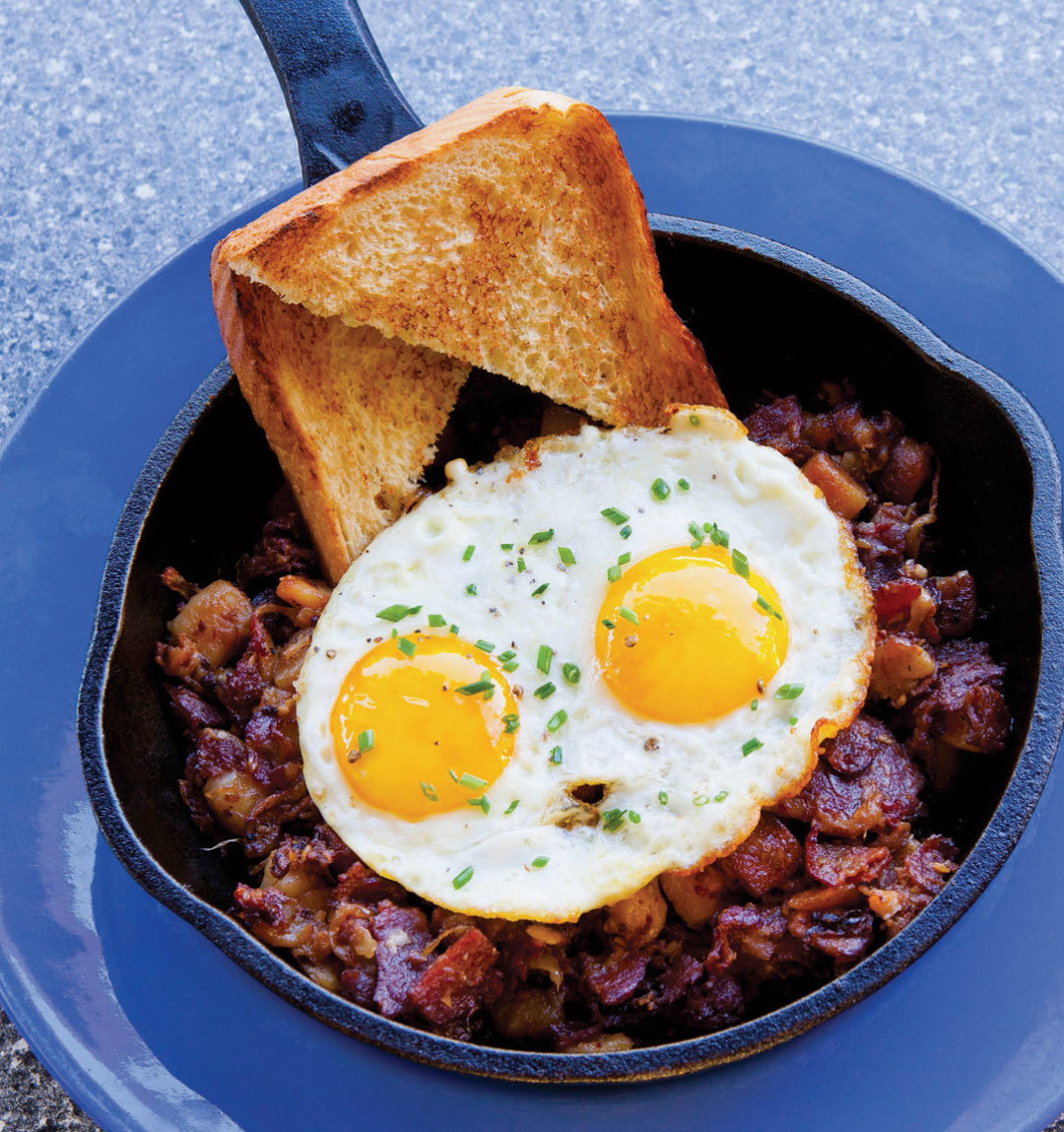
Corned beef hash at Kiawah's Southern Kitchen
Image: Kiawah Island Golf Resort
The Kiawah Island Golf Resort, one of the grandest in the country, is known for its small touches. When Hala and I opened the door on our suite at the resort’s stately seaside Sanctuary Hotel, a Charleston Chew candy bar and a box of tea from a nearby plantation were waiting for us, which made us smile, as well as a sweetgrass basket, which gave us pause. Kiawah Island is 20 miles southwest of Charleston, and in some ways worlds away. There’s none of the terrible traffic one finds in the city, no roving packs of bros in backwards ballcaps of the sort that take over downtown Charleston after sundown. But there were some unhappy similarities too, namely the sea of similar faces. At Kiawah, just as in Charleston, we saw few people of color, and the ones we did see were working in a service capacity.
Nevertheless, Hala confessed that she didn’t at all feel uncomfortable at the resort, to my enormous relief. Indeed, throughout our stay it seemed clear that Kiawah was welcoming to all, or at least all who can afford a $600-a-night hotel room. It’s a bit of a drive—30 minutes outside of Charleston, down a series of twisting, two-lane roads populated by the sort of slow-moving Deep South dwellers that drove Joe Pesci crazy in My Cousin Vinny. But the rewards are many—PGA Tournament golf courses, miles of pristine seashore, guided activities including marsh kayaking and sunrise yoga classes, and exceptional fine dining.
Yes, exceptional. Having come to expect nothing more from resort food than elevated cruise ship fare, I was pleased to have my prejudices shattered. Kiawah possesses an array of good restaurants, several good enough to make the island a food destination in itself. There’s the elegant Ocean Room, for one, which you ascend into via a gently curving staircase. Awaiting patrons at dinnertime is a Lowcountry onion soup with oxtails, along with grass-fed filet mignon, juicy and ripe from 21 days of wet-aging, and a smart wine list that was spotlighting female vintners during my visit. Gentle mornings, meanwhile, are enjoyably spent sampling the delectable corned beef hash at Southern Kitchen, or eating your fill of biscuits, homemade jam and creamy, buttery grits at the Jasmine Porch Café, as you gaze out at a panorama of sand and sea.
In between, you’ll likely find yourself on an endless treadmill of fun, from golf, to tennis, to hitting the beach, to soaking in a mineral bath at the spa, followed by a eucalyptus-scented massage. Still, the best moments of the trip, at least for us, came late in the evening, when Hala and I retreated to our suite. We propped open the balcony doors, let in the ocean’s roar and enjoyed a nightcap on the patio, staring down at the waves breaking on a shore full of tourists. We couldn’t hear what they were saying or guess why they were at Kiawah or even see what they looked like. They were just people. It was too dark and they were too distant for us to say anything else.
Which was maybe for the best, Hala and I decided.


